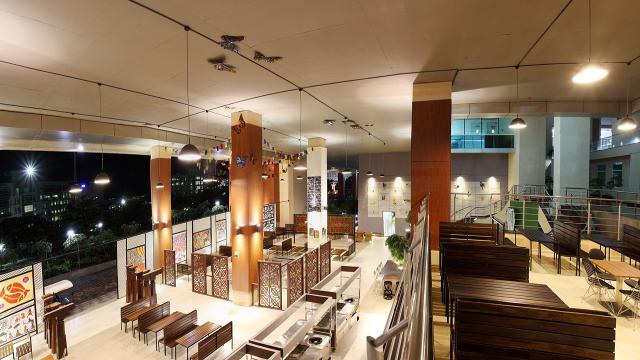There are several obvious ways to measure the success of a restaurant, the most visible being that of patrons at every table. Some other methods of measurement also exist, however, and they demonstrate the indicators of the true performance of a restaurant. If you haven’t used metrics to track the performance of your restaurant before; it’s time to get started. Although there are hundreds of metrics for various industry usage, the following metrics will best fit within the parameters of a restaurant. Additionally, If you haven’t yet built a roadmap, use this free business plan software to get your restaurant into perfect position for growth and profitability.

1. Gross Margin
Your restaurant’s gross margin is an indicator of how much of each sales dollar goes toward profit. A high gross margin suggests that a majority of each dollar earned is retained; however, some of the costs aren’t included. For a startup restaurant, the metric will indicate if pricing levels are appropriate and if the processes of the startup are effective.
2. Sales Revenue
Using this metric will inform the sales productivity of your restaurant. How is the restaurant performing in the marketplace? This metric will provide the answers. The sales revenue metric is one of the most important measurements of key performance indicators (KPIs) to utilize.
3. Net Profit Margin
To further define net or final profit versus gross profit, this metric evaluates the ability of the restaurant to create revenue and retain a healthy portion of profit at the same time. The monthly sales expenses of the restaurant are subtracted from the total revenue, leaving an indicator of net profit margin. Working with financials can be difficult; however, if a staff member is willing to learn how to start a bookkeeping business, the investment of time could benefit your business with metrics calculations and on-going bookkeeping tasks for your restaurant.
4. Lead Conversion Rates
Are potential customers becoming customers? This metric measures the performance of the marketing efforts of the restaurant, indicating whether potential customers are enticed by the marketing strategies the restaurant offers and are following through by becoming customers.
5. Retention Rate
Further to the Lead Conversion Rate that measures potential customers who become actual customers, will the customers who are served at the restaurant return again to become “retained” customers. The Retention Rate metric measures this invaluable data with the results that indicate either the performance of the restaurant is stellar or improvements are needed.
6. Customer Acquisition Rate
Marketing strategies that lead to customer retention are worth celebrating; however, what was the cost of acquiring those customers via the marketing strategies employed? This metric defines the total cost of the acquisition per customer and indicates the need for either reducing the costs or managing the current set of marketing strategies.
7. Customer Lifetime Value
If the restaurant has been in business for at least one year, the Customer Lifetime Value is an excellent metric to measure how much revenue can be expected from the customer who is retained and continues to be a steady source of revenue. This metric is a forecast of what is to come; however, it is useful for planning purposes and it demonstrates the quality of the restaurant staff members.
8. Website and Social Media Traffic
In today’s world, tracking the restaurant website and social media presence is critical to understanding whether or not the marketing strategies are effective. It is possible to measure the number of visitors to the restaurant website each month by using free analytics from marketing sources. Viewing the monthly traffic is an indicator of how customers are searching for and sourcing restaurants in your geographical location. It also suggests how many customers follow through to visit your restaurant. If the website traffic or social media followers are low in numbers, try using some or all of the following:
- Increase the search engine optimization (SEO) of keywords on your website. These words tell search engines to position your restaurant near or at the top of the list by search terms.
- Increase the seamless integration of pages for customers who click onto your website. Ensure there are no broken links and that all page elements are clean.
- Offer a “Make a Reservation” button to make an interactive experience for customers and use a software program to create email responses confirming the reservation.
- Add a “chef’s blog” or “chef’s journal” to offer weekly notes from the head chef and jumpstart interest from customers.
- Mark certain evenings on your website as “family-style” service, wherein communal meals are served and families receive special pricing.
- As is always true, mouthwatering images of spectacular menu items will definitely entice customers to walk through your door.
Whether you are checking profit margins or examining your website traffic, metrics are the key performance indicators that suggest the best ways to improve your business model.
